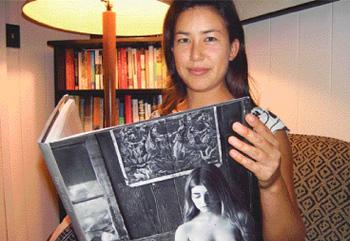LIHU‘E — “Taylor Camp” by Kaua‘i author John Wehrheim, tells the story of a Kaua‘i experiment in benign anarchy, a community of young people from across the country and the world that came together and tried to live by the
LIHU‘E — “Taylor Camp” by Kaua‘i author John Wehrheim, tells the story of a Kaua‘i experiment in benign anarchy, a community of young people from across the country and the world that came together and tried to live by the ideals of the 60s, according to a press release from the author.
The reader experiences Taylor Camp’s eight-year existence through Wehrheim’s evocative photographs, descriptive captions and a series of brutally honest, humorous, often conflicting quotes from interviews made 30-years later, when the author tracked down many of the campers, their neighbors and the Kaua‘i officials who eventually got rid of them.
In the spring of 1969 every kid’s Tarzan and Jane dream of tree houses on a tropical beach came true at Kaua‘i’s Taylor Camp when Howard Taylor, brother of actress Elizabeth, bailed out a rag tag band of 13 young Mainland hippies jailed for vagrancy and then invited them to camp on his oceanfront land.
The previous year, right after purchasing the property, Howard learned of the government’s plan to condemn the land for a park, ending the Taylors’ dream of building a family compound on the seven-acre site. In an act of both compassion for the jailed hippies and subtle revenge upon the government for frustrating his plans, Howard informally established Taylor Camp and then soon after, stepped back and left the campers to their own devices — without rules, restrictions or guidelines. Soon waves of hippies, surfers and troubled Vietnam vets found their way to Howard’s land and built a clothing-optional, pot-friendly village at the end of the road on the Kaua‘i’s North Shore.
By the summer of 1970, none of the original campers remained. The newcomers quickly abandoned tent living for more permanent and comfortable dwellings and the village population grew to over 100 with 17 tree houses and a scattering of tents.
After he and his sister, Elizabeth, celebrated Christmas dinner with the campers, Howard would never be seen on the site again. By 1976 there were 32 structures, including a co-op store, church, sauna and toilet. The county government picked up the garbage and the school bus stopped for the children. To control growth, the campers established a building moratorium enforced by common consent, power politics and “vibes.”
These refugees from the straight world built with the same materials as poor squatters throughout the tropics — bamboo, scrap lumber, rough logs and branches, salvaged tin roofing, plastic sheeting and screens, flimsy mosquito netting and cheap printed fabric.
But though the materials were the same, the manifestation was quite different. These “refugees” lived in a pristine forest on a beach in Ha‘ena at the mouth of Limahuli Stream. Guided by the spirit of whimsical creativity, this “refugee camp” followed the aesthetic principle that drives the most humble of builders as well as the greatest architects: No form without function.
The State finally got a court order condemning Taylor Camp in 1974, but it wasn’t until 1977, after using the Legal Aid Society to stave off eviction, that the campers made a collective decision to leave. Publishing a “thank you” letter in The Garden Island newspaper, the campers withdrew their claims against the State for relocation assistance “to show our gratitude to the people of Kaua‘i for letting us stay here for so long.”
Before the last camper moved out, State officials torched the village, leaving little but ashes and memories.
Copies of the book arrived on Kaua‘i this week. It sells for $65 from the author. Call Wehrheim at 245-2617 or 245-8606 or e-mail jwehrheim@pacific-hydro.org. He will sign and inscribe books upon request.


